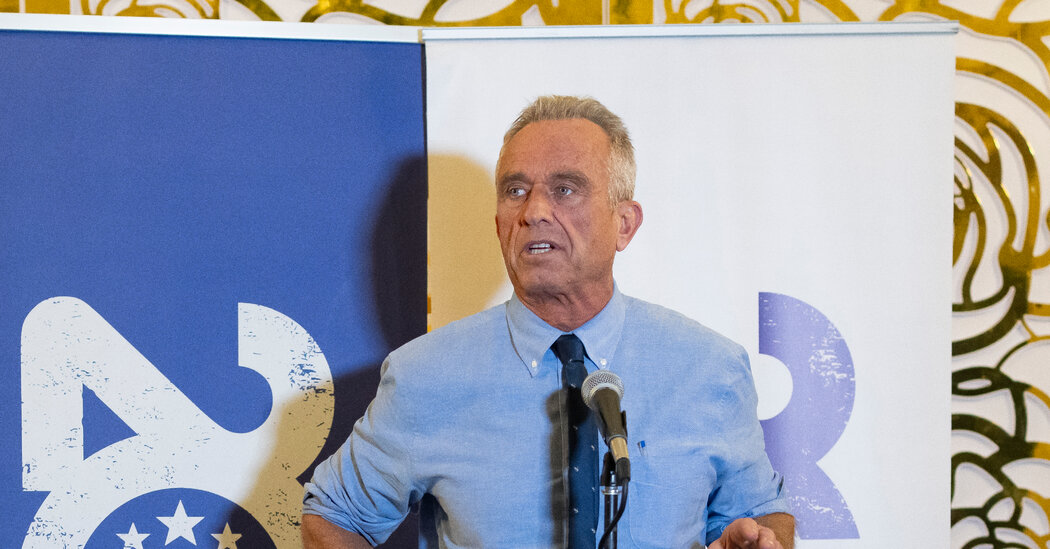
Robert F. Kennedy Jr., the most attention-getting independent candidate for president since Ross Perot, may not have the poll numbers to end up on the debate stage next month. But he increasingly has something else: a reputation as the electoral “X factor.” Which means it is increasingly impossible to ignore what may be termed his “P factor.” Or even “K factor.”
“P” being prep and “K” being Kennedy. In an election fought partly through the images that inundate social media and pit archetype against archetype — Donald J. Trump, the 1980s red-tie-wearing sultan of reality TV, versus President Biden, the aviator-clad deal maker of D.C. — Mr. Kennedy offers a Rorschach test of a different kind. At least stylistically speaking.
His look — skinny rep ties, button-downs, shrugged-on suits, shock of gray hair and weather-beaten tan — not only sets him apart. It also speaks directly to associations with the early 1960s, a golden age of promise that represents “vigor, wit, charisma, change,” said Sean Wilentz, a professor of American history at Princeton University, and that are buried deep in the American hive mind.
And that comes from what Lisa Birnbach, a co-author of “The Official Preppy Handbook,” calls “the style semiology of the O.G. Kennedy men”: John F. Kennedy, Mr. Kennedy’s uncle, and his father, the presidential candidate for whom he is named, along with all the Camelot-era mythology and hope they represent. Not to mention the classic New England style they assumed as their own kind of camouflage, the better to align their Irish Catholic clan with Boston Brahmin tradition.
And by association, Mr. Kennedy. Fine-tuning his image to evoke his father and uncle, has the effect of making people think they know him and what he stands for. That image in turn gives Mr. Kennedy’s more outré positions an aura of credibility, even when his words do not: He has claimed that chemicals in the water cause children to become transgender and believes that Wi-Fi can lead to chronic illness. There’s also his anti-vaccine stance.






